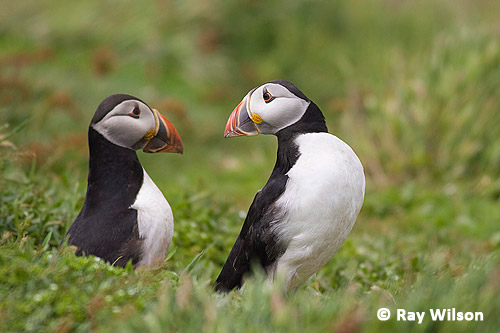
- Home
- Photography Tours
- Diary / Blog
- Galleries
- Foreign Trips
- Tasmania 2016
- NE Queensland 2016
- Western Alps 2016
- NE Spain 2016
- Australia's Wet Tropics 2015
- Australia's Top End 2015
- SW Australia 2015
- Switzerland 2015
- Andalucia 2015
- Belize 2015
- Australia 2014
- Switzerland 2014
- Belize 2014
- Bahama Islands 2014
- Switzerland 2013
- Ecuador 2012-2013
- Florida 2011-2012
- Vancouver Island 2011
- Australia 2010
- Peru 2008
- Bulgaria 2007
- Lesvos 2006
- California 2006
- New Zealand 2005
- Extremadura 2005
- Goa, India 2004
- The Gambia 2003
- About
June 2009
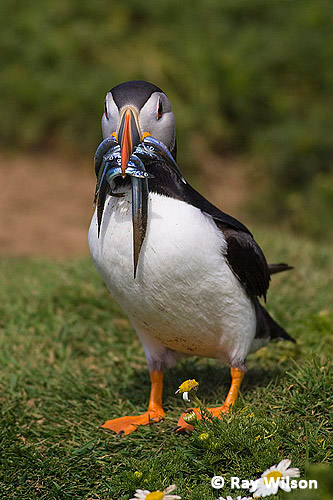 |
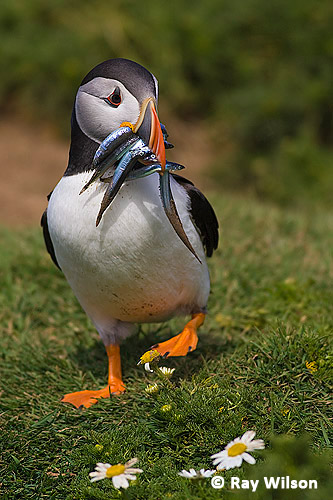 |
Atlantic Puffin (Fratercula arctica) - Skomer, Pembrokeshire, Wales
Although not primarily a photographic trip I did still manage to get a few decent shots of the numerous Puffins nesting on the island when I took a trip to Skomer with a few friends.
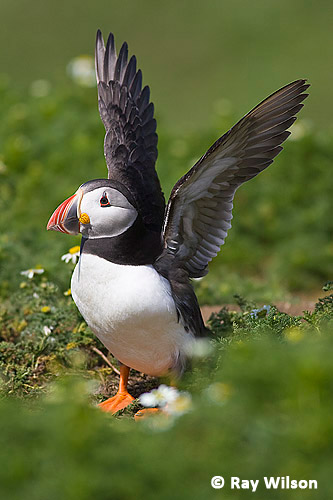 |
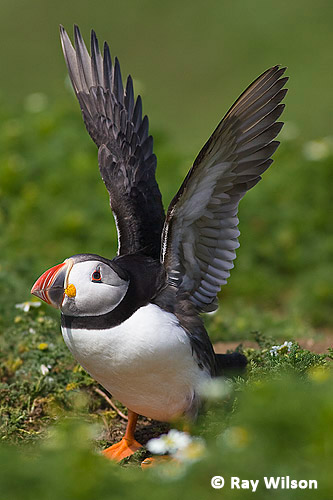 |
Atlantic Puffin (Fratercula arctica) - Skomer, Pembrokeshire, Wales
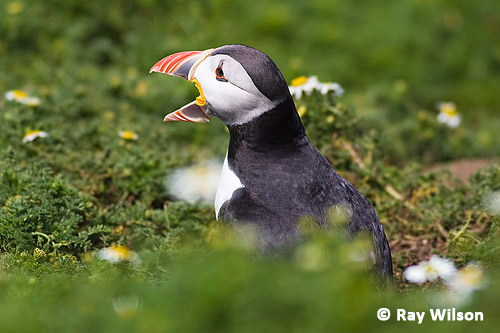
Atlantic Puffin (Fratercula arctica) - Skomer, Pembrokeshire, Wales
Tourist trips out to seabird breeding islands never allow you to get the best light since you don't arrive on the island until about 11am and leave about 4pm. During these times on sunny days the light is very harsh and the contrast between highlights and shadow is too much for the camera to cope with. At these times it is essential to ensure the sun is directly behind you so that you can minimise the strong shadows on your subject and even then you will still need a significant amount of post-production optimisation in Photoshop to generate a usable image. For these reasons I don't usually bother taking photographs at midday in sunny weather, but when it is the only time it is possible to be on the island you have to make the best of it you can.
Atlantic Puffin (Fratercula arctica) - Skomer, Pembrokeshire, Wales
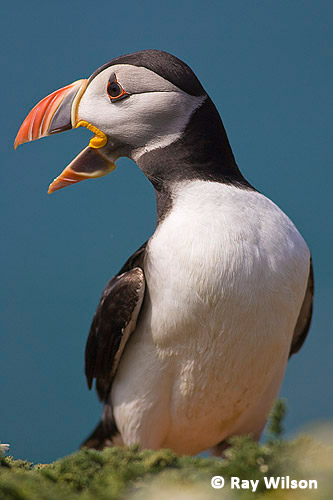 |
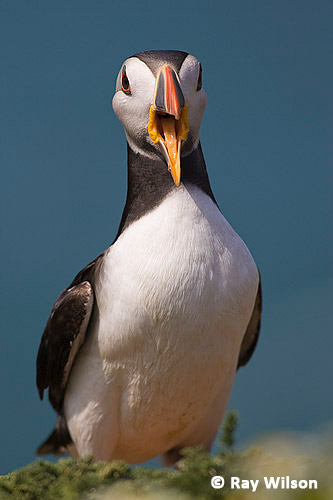 |
Atlantic Puffin (Fratercula arctica) - Skomer, Pembrokeshire, Wales
The scenery around the island and the rugged Pembrokeshire coast is stunning...
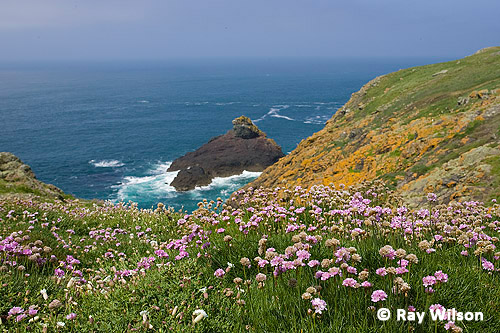
Skomer, Pembrokeshire, Wales
In June, Skomer is blanketed in Red Campion flowers...
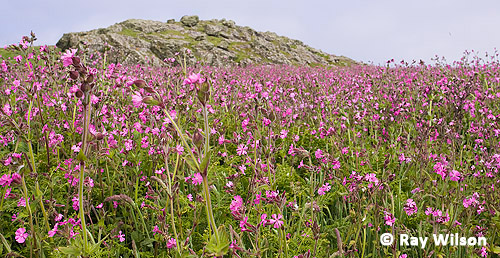
Red Campion (Silene dioica) - Skomer, Pembrokeshire, Wales
This very friendly stallion was grazing on the headland at Martin's Haven.
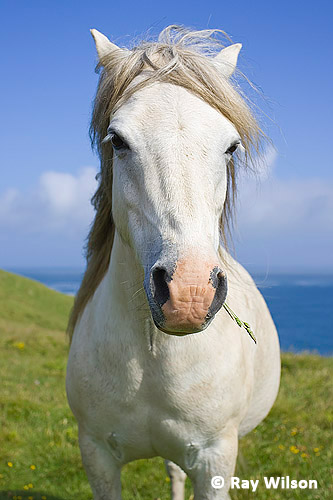
Pembrokeshire, Wales
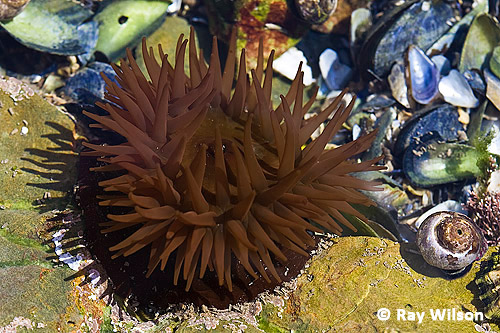
Beadlet Anemone (Actinia equina) - West Glamorgan, Wales
While in south Wales, we also spent a bit of time searching the rockpools. I was quite impressed that I managed to photograph these anemones, which were about 6 inches below the surface of the water, with no reflections without the benefit of a polarising filter!
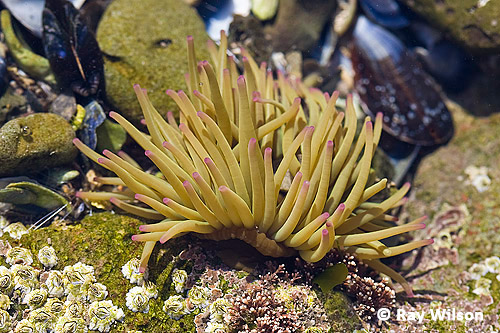
Snakelocks Anemone (Anemonia viridis) - West Glamorgan, Wales
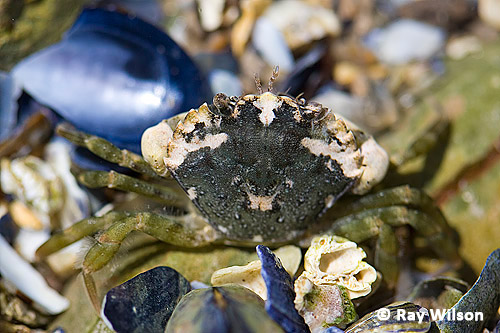
Green Shore Crab (Carcinus maenus) - West Glamorgan, Wales
Green Shore Crab is the most commonly encountered crab around the British coast.
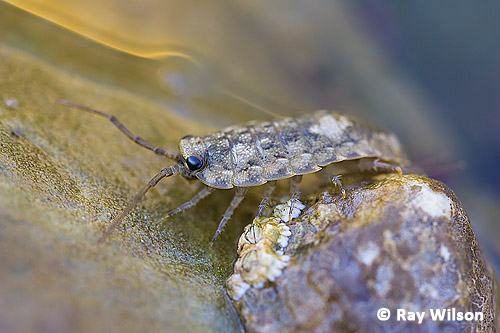
Sea Slater (Ligia oceanica) - West Glamorgan, Wales
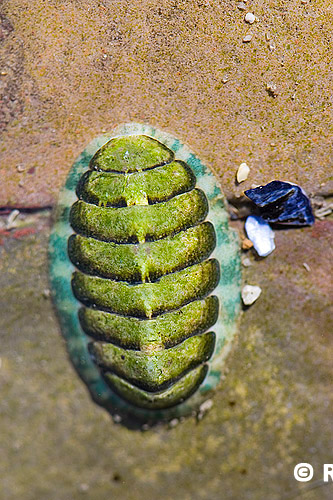 Lepidochitona cinerea |
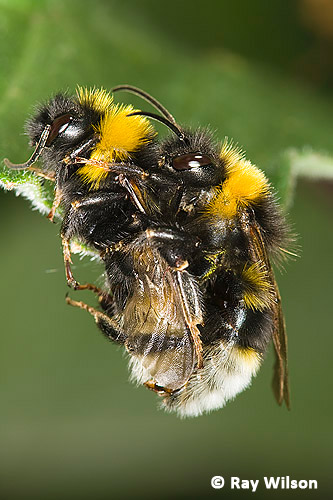
mating Buff-tailed Bumblebees (Bombus terrestris)
|
This silverfish is one of a small captive colony that a friend maintains at Swansea University for her research.
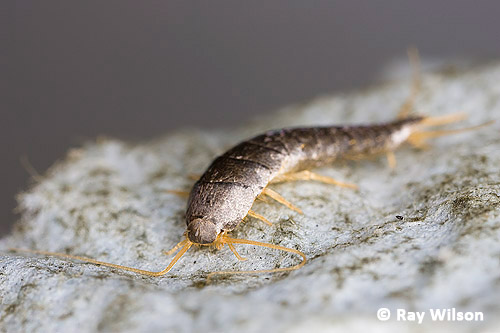
Silverfish (Lepisma saccharina) - West Glamorgan, Wales
Misumena vatia is a beautifully camouflaged spider that is capable of changing its colour from white to yellow depending on the colour of the flower it is sitting on. The colour change is controlled by visual cues and allows the spider to perfectly match its surroundings.
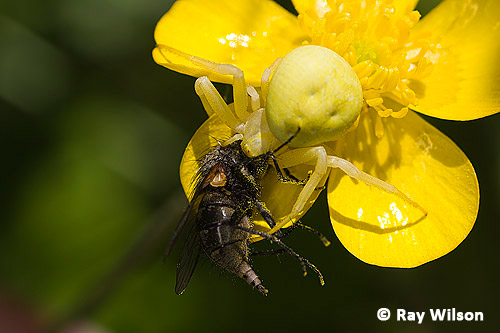
Goldenrod Crab Spider (Misumena vatia) - Anglesey, Wales
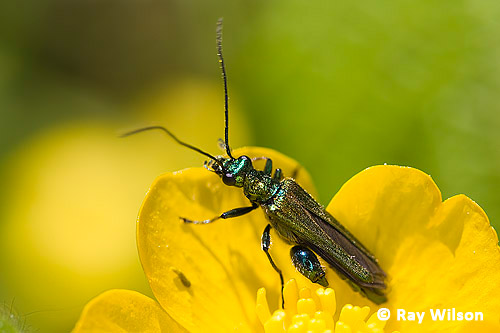
Male Thick-legged Flower Beetle (Oedemera nobilis) - Anglesey, Wales
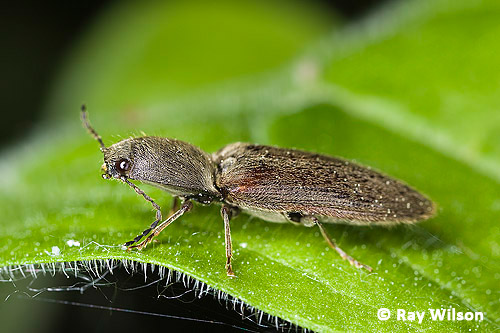
Click Beetle (Athous sp.) - Anglesey, Wales
Finally, I have been spending a bit of time this month getting photographs of all the lifecycle stages of a few medically important mosquitoes. Both species shown below are from laboratory reared colonies photographed in a homemade aquarium consisting of two microscope slides glued onto a base with a small space in between which is just wide enough for the mosquito larvae and pupae.
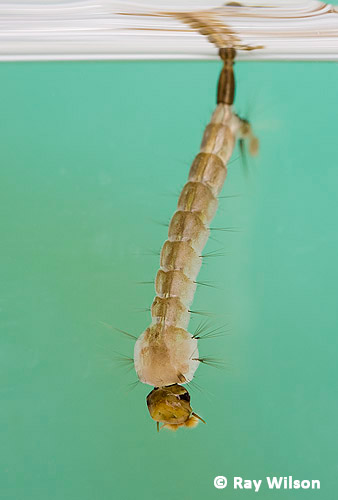
Yellow Fever Mosquito (Aedes aegypti) larva
Along with Aedes aegypti, Aedes albopictus is one of 63 species of mosquitoes that have been found infected with West Nile Virus in the United States. It is also a reservoir for Dengue, eastern equine encephalomyelitis and other potentially lethal arboviruses. Originally from eastern Asia, it was introduced into Hawaii at the beginning of the 20th century and has now spread throughout most of the lower 48 states. Its rapid spread is mainly due to transportation of used tyres since its larvae have a preference for small dark pools, such as those often found in tyres. Worryingly, it is now also well established in Italy and is spreading across Europe. With it recently being recorded in the Netherlands it is only a matter of time before it reaches Britain.
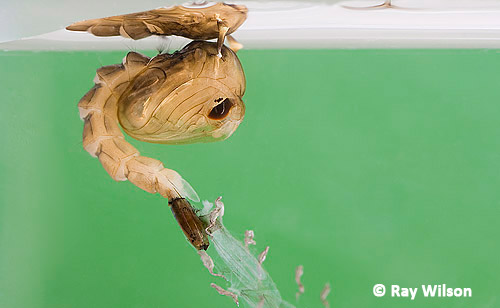
Asian Tiger Mosquito (Aedes albopictus) pupa just after transforming from the larval stage.
Ray Wilson owns the copyright of all images on this site.
They may not be used or copied in any form without prior written permission.
raywilsonphotography@googlemail.com
